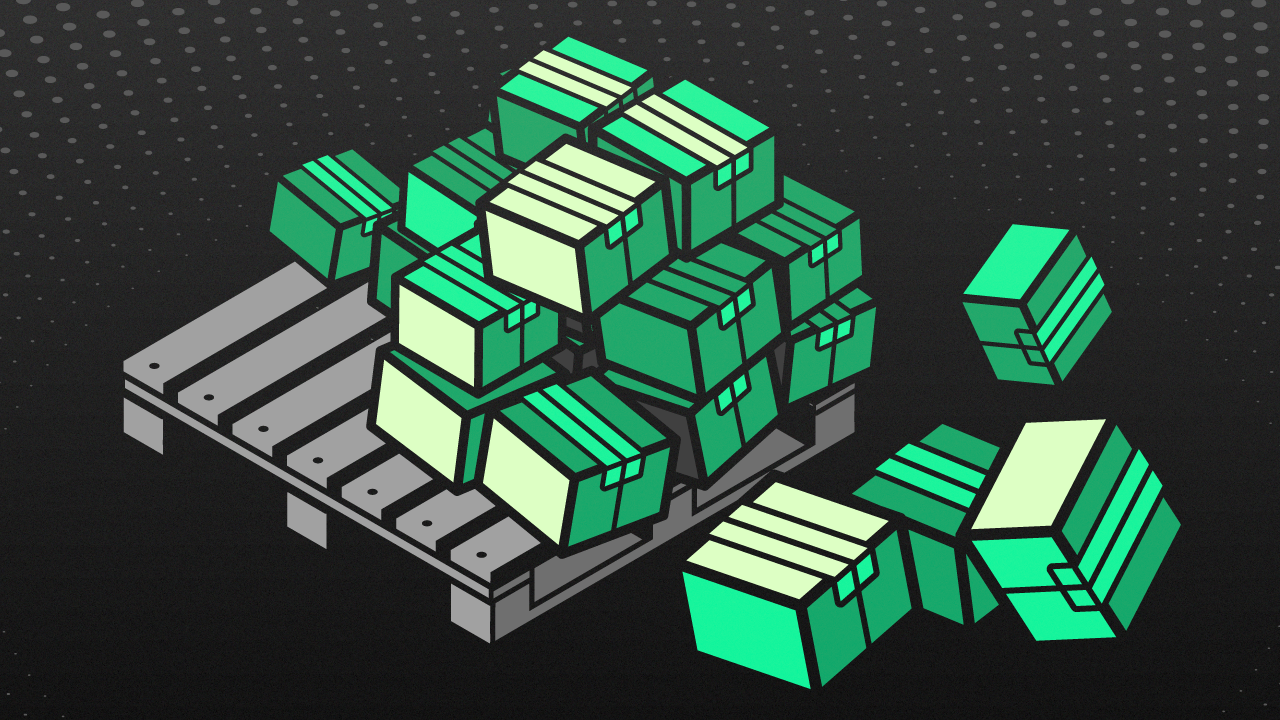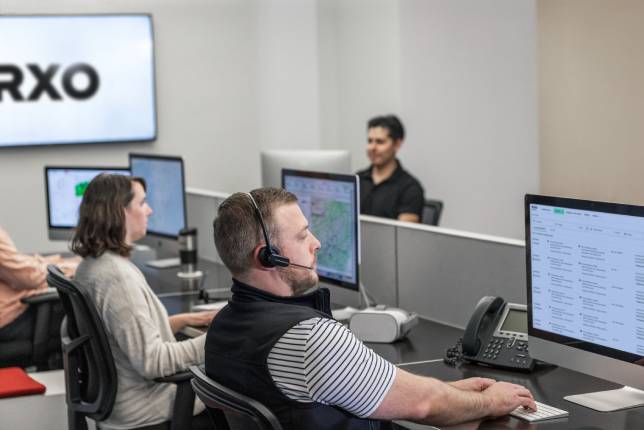Article Overview
Click the link to jump to a section
- There are more freight claims in LTL (vs. full truckload).
- Higher freight classes are more likely to have a claim.
- Proper packaging is very important.
- When damage occurs, you need to have proper paperwork, document immediately, understand your carrier’s liability structure and understand your rights.
- A 3PL can help you better manage claims with carriers.
No one wants to talk about it — or even think about it — but the fact is, when you ship less than truckload (LTL), chances are you’re eventually going to have to file a freight claim.
Stuff happens.
LTL is a high-touch operation, and every time your freight changes hands, trucks or facilities, it is going to be exposed to a certain amount of risk. It could arrive damaged, short of its original shipping volume or not at all.
What Is a Freight Claim?
A freight claim is a legal demand for restitution that a shipper makes in the case of damaged freight, lost freight or a short shipment (when a portion of the freight is lost).
Freight claims are filed with carriers when a shipment is damaged or lost in transit.
The Common Types of LTL Freight Claims
- Packaging damage
- Crushed
- Forklift holes
- Lost freight
- Shortage
While you might not be able to avoid lost or damaged freight entirely, you should know what to do when you encounter it.
Use this eight-lesson LTL freight claims crash course and learn why losses and damages occur in LTL, how to minimize or avoid them, and how to proceed when they happen.
Lesson #1: Expect More Freight Claims in LTL Because Your Cargo Is Handled a Lot
The main causes of losses and damages in LTL shipping can be connected to the major ways it differs from full truckload shipping.
First and foremost, LTL shipments don’t just move from point A to point B. Most LTL trucking companies operate with a hub-and-spoke model in which freight is consolidated at central terminals before being redistributed for linehaul in lanes that will carry them to their destination terminal.
Throughout its journey, a single LTL shipment may pass through as many as five or six facilities, getting unloaded and reloaded every time. At the end of this process, freight is transloaded one final time and driven to its delivery destination by a final mile driver.
That’s a lot of hands on your freight, and a lot of opportunities for it to be dropped, bumped, crushed or otherwise mishandled.
Lesson #2: Higher Freight Classes Are More Prone to Damage
One of the reasons freight classes and NMFC codes exist is to alert LTL carriers to how damage-prone the freight they are handling is.
As a result, damage claims tend to be more frequent at higher freight classes. This is the most fragile, least dense freight: ping pong balls, flat-screen TVs, assembled furniture and so on.
A pallet of delicate electronics needs to be handled much more carefully than a pallet of nails. If you crunch the packaging on the latter or even drop it off a forklift, those nails are probably going to be just fine.
This is a great preview of our next lesson: Particularly when you’re packaging high-class freight for LTL, pay close attention to packaging.
Lesson #3: Packaging Matters if You Want to Avoid Damages & Freight Claims
Because so much of LTL shipping is out of your hands, it’s especially important to excel at the parts of it you can control.
This means taking pains to package your freight as securely as possible and be as clear as you can about which pallets are most in danger of being damaged.
And it’s not just a good practice, it’s crucial to filing a successful claim — the National Motor Freight Classification (NMFC) guide lists packaging requirements for every specific product, and failure to follow them can result in a rejected claim.
Here are some tips to be sure your freight is as secure as it can be when it embarks on its LTL journey:
Wrap it up tight.
The dollars and cents you’ll save by skimping on pallet wrap are nothing compared to the losses you can incur when a pallet of glassware shatters on impact. Give your freight the padding it needs, every time.
Keep it inside the pallet.
If you think you can get away with a bit of overhang, you’re wrong. LTL drivers will pack their trailers as tight as possible to maximize the freight they can get inside, and anything that sticks out is at risk of getting crushed by the pallet next to it.
Stack it evenly.
Trailers are three-dimensional, and drivers will stack pallets to utilize all of their available volume. If yours winds up on the bottom, it may be crushed if it can’t evenly distribute the weight of the pallet above it.
Label it clearly.
See above re: the three-dimensional space of a trailer. If your freight can’t have anything stacked on top of it, the driver absolutely must be able to see this quickly and clearly.
Use the checklist below when you’re packing your pallets for LTL to avoid as many freight claims as you can.
LTL Packaging Checklist
Is your freight…
- Within the dimensions of the pallet with no overhang?
- Stacked to an even height across the entire pallet?
- Properly wrapped or protected?
- Clearly labeled “Fragile” if applicable?
- Clearly labeled “Do Not Stack” if applicable?
- In alignment with NMFC packaging guidelines?
Lesson #4: Documentation Matters Too
If damage or loss does occur, you’ll definitely want a paper trail to make the claims process go as smoothly as possible.
Keeping all your documents in order can ensure that your relationship with your carrier remains amicable and that you receive the most accurate payout you can.
Here are some documents you’ll want to make sure to fill out in full and keep on file:
- Commercial invoices
- Verification of the product’s value
- Bill of lading (BOL)
- Proof of delivery (POD)
- Packing lists
- Photos of cargo at the time of loading
With all of these handy in the event of a claim, you can avoid a nasty you-said-they-said dispute.
Lesson #5: Know Your Carrier’s Liability Structure
Different LTL carriers handle claims in different ways.
It’s important to know exactly what your carrier’s policy is in the event of lost, damaged or short freight to know how much you can expect to recoup.
There are two main liability structures you’re likely to encounter among LTL carriers.
The 2 Liability Structures of LTL Shipping
1. A flat rate.
These LTL carriers will pay out the same dollar amount per pound for lost or damaged freight regardless of what its contents are.
2. A graded scale.
LTL carriers who go this route will pay out at different rates depending on your freight’s class or commodity type. More fragile freight of a higher class is typically more valuable, and these carriers will pay out at a higher dollar-per-pound rate for it. Carriers may also identify certain commodities like alcohol, food products and auto parts and specify a separate pay-out rate for them under their tariff.
In any case, expect your carrier to have a maximum liability it is willing to pay out. The maximum amount is set forth in the LTL carrier’s tariff.
If you’re worried that this maximum isn’t sufficient for your freight, you can declare a value for the shipment at the quoting stage. Your quote as listed on the bill of lading should indicate that a value has been declared for your shipment.
The list of carriers who can meet your needs might be limited if you require full coverage in the event of loss, so be sure to make this need known clearly when reviewing potential carriers’ cargo claims liability policies and procedures.
Lesson #6: Note Damages Immediately
So your consignee receives your shipment and notices visible damage to one or more pallets: Edges are crushed, some boxes have been punctured or whatever else.
What happens next?
Your first step is the most important: When you spot damaged freight upon delivery, inform the driver immediately, clearly note the damages on the proof of delivery and take photographs of the damaged product.
Failing to report damage immediately is the #1 reason claims are denied.
Your consignee should mark on the delivery receipt that there is visible damage and alert the driver of this fact verbally.
If you’re working with a carrier directly, this will get reported back to the carrier. If you’ve gone through a third-party logistics company (3PL), it will get back to them instead.
The best way to ensure a successful claim?
Inform the driver immediately, clearly note the damages on the proof of delivery and take photographs of the damaged freight.
I Reported Damages — What Now?
At this point, you have two options:
- If the driver acknowledges the damage, your consignee can refuse to accept the affected pallets and send them back to the point of shipping.
- You can accept the pallets, unpack, them and assess the actual damage to your freight, and file a claim for that value.
What If I Discovered Damage After I Signed the POD?
If damage is concealed — that is, if it’s not discovered until after the POD has been signed as clear and the packaging opened — you can still file a claim.
While all LTL carriers have their own tariffs, it’s common for carriers to investigate a claim as concealed damage if they’re notified within five business days. If they do pay out, they’ll generally pay 1/3 of their standard liability (following the logic that damage could have occurred in any “third” of the move — loading, transit or after unloading)
But it is absolutely imperative that you file your claim quickly and allow the carrier to inspect the product before any further handling or movement occurs.
It may seem like whatever follows this point is likely to be a contentious process, but there’s good news: the law is on the side of amicable resolution.
Lesson #7: There’s a Federally Mandated Structure for Processing Freight Claims
All LTL freight claims are subject to the guidelines established in the Carmack Amendment to the Interstate Commerce Act as well as the NMFC guide. That said, LTL carriers generally have rules that govern their liability for cargo loss/damage claims and prevail over the Carmack Amendment included in their tariffs.
The Carmack Amendment lays out who is liable for damages and losses that occur during shipping, as well as the timeline for filing a claim and recovering damages.
Carmack Amendment: Key Points
- Liability generally lies with the carrier who delivers damaged freight to the receiver (although this is more complicated in the case of a multi-carrier move, where a carrier who pays out may have a right to recovery against a separate at-fault carrier).
- Though carriers can be held liable for the full replacement value of goods, if there is an underlying agreement between the shipper and carrier limiting the value the carrier is liable for, that agreement takes precedence.
- Carriers hold liability even if they fail to issue a bill of lading or delivery receipt.
- Shippers may bring civil action (a lawsuit) against a carrier responsible for a loss if damages are not paid out appropriately.
- Shippers have a legal right of up to nine months from the delivery date to file a claim, and up to two years to bring civil action from the date a claim is denied.
When your freight claim is accepted — and most claims that follow the proper procedures are — the amount you’ll be able to recover in damages depends on your carrier’s policies and your relationship with them.
Lesson #8: 3PLs Can Help You Handle LTL Freight Claims
Freight claims can be a challenge for even experienced LTL shippers. Working with someone who has been there before can help streamline the process in some major ways.
When you work with a 3PL to ship your LTL freight, you can benefit from their experience, their assets and their connections to make filing a claim as painless as possible
3PLs Can Coach You Through the Process
If you’re new to the process, your representative at a 3PL can help you understand your rights and responsibilities, how liability is assigned, what steps to expect, how to give your claim a strong chance of being accepted, and how to minimize damaged freight in the future.
3PLs Can Mediate Claims With Carriers
Sometimes who you know matters more than what you know. Because they bring in so much business, 3PLs tend to have executive-level contacts at the carriers they work with who are willing to help disputes reach amicable solutions to keep their relationships strong.
Note: This is not intended to be legal advice. If you need legal advice on how to deal with freight claims, you should consult with your counsel.


